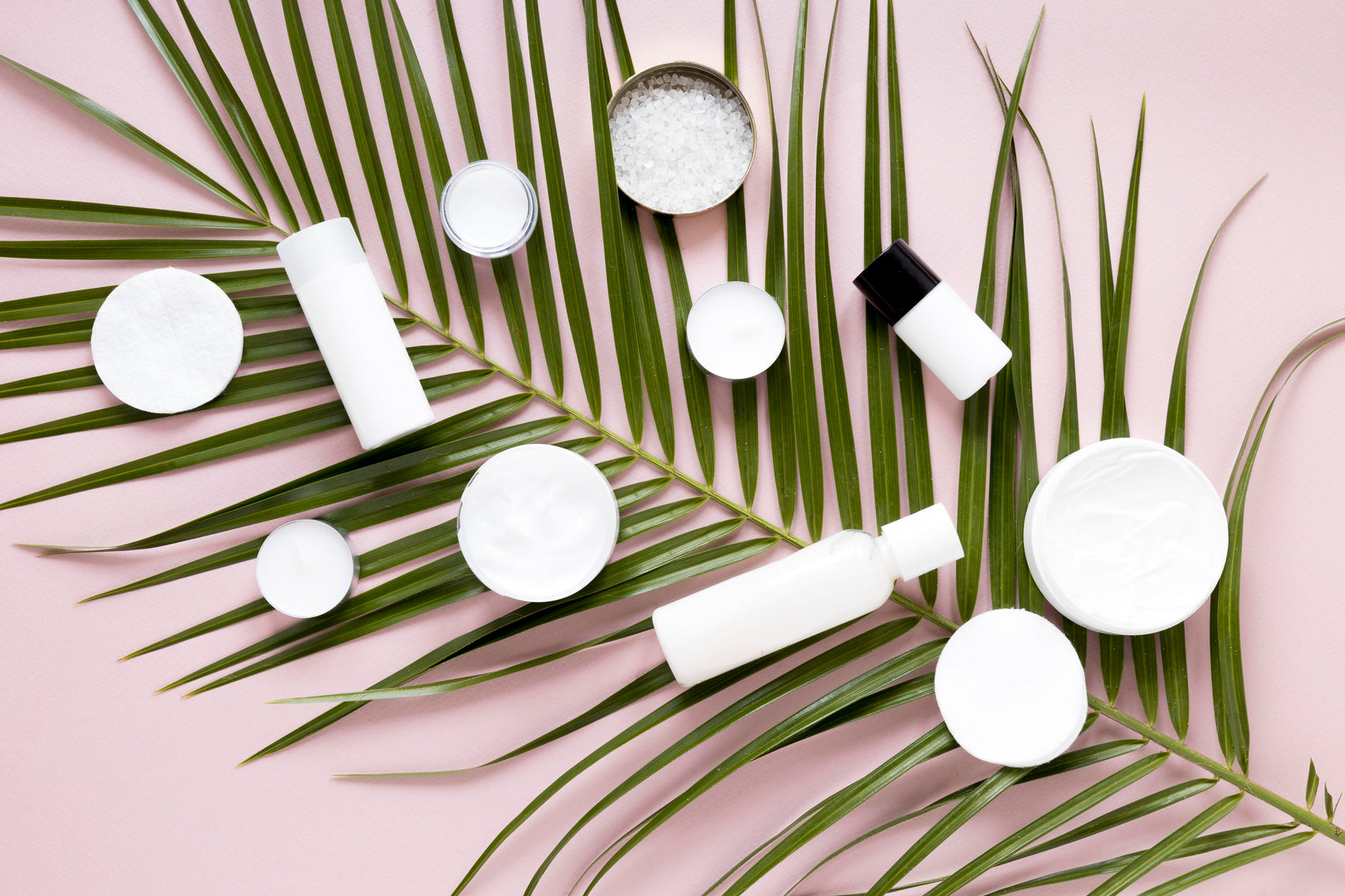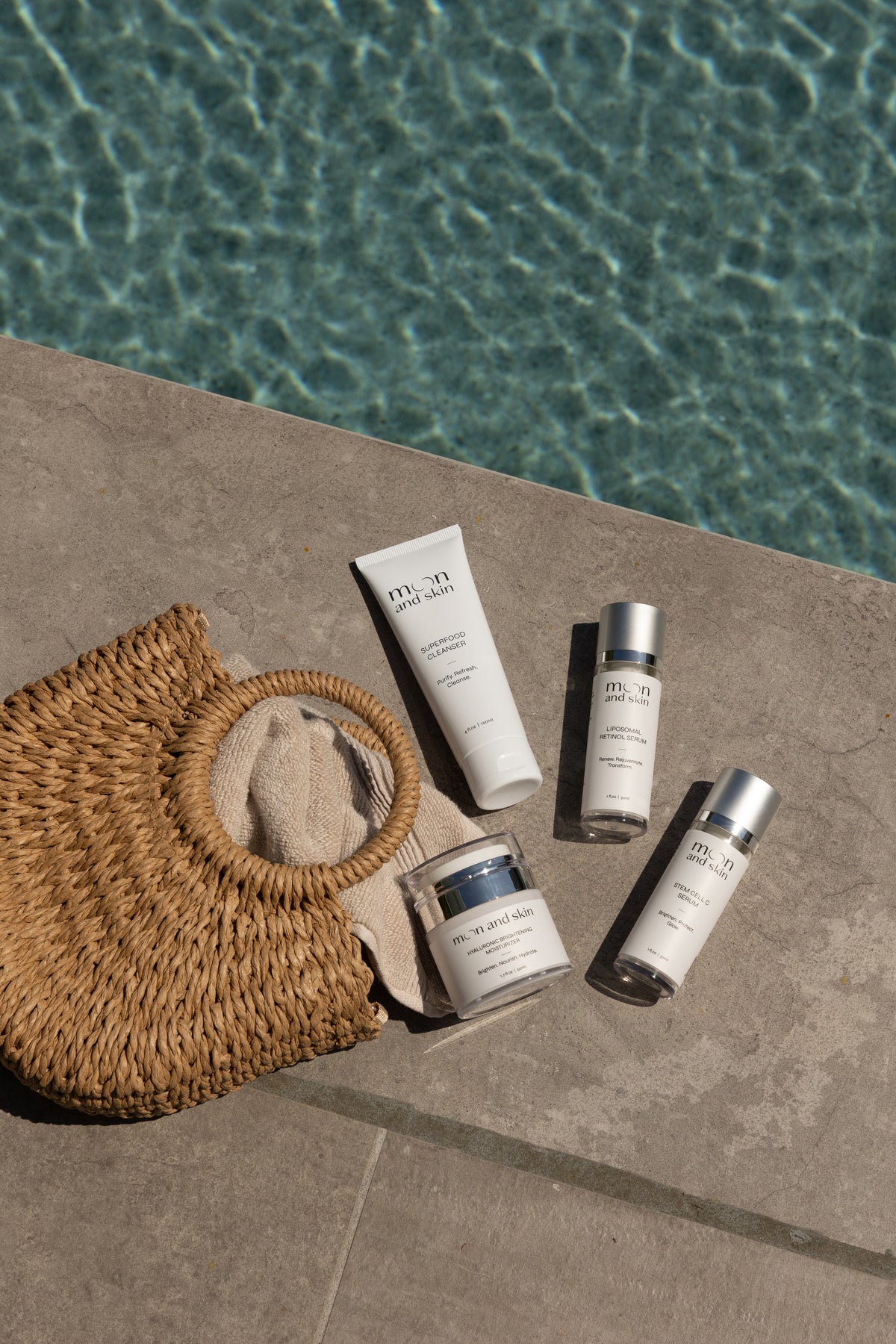Table of Contents
Introduction
Have you ever wondered why your skin sometimes feels lackluster or appears dull? The answer may lie in the often-overlooked step of exfoliation. It's a common misconception that all you need is a good moisturizer or a serum to achieve radiant skin. Exfoliation, however, plays a pivotal role in your skincare routine, helping to remove dead skin cells, unclog pores, and promote a smoother, more vibrant complexion.
In this blog post, we will explore the intricacies of exfoliation, including when and how to incorporate it into your skincare regimen, and the different types of exfoliators available. We will also discuss how our skin evolves throughout life, much like the phases of the moon, and why understanding your unique skin type and condition is essential for creating an effective skincare routine.
By the end of this guide, you will have a comprehensive understanding of when to use exfoliators in your skincare routine, who should exfoliate, and how to do it safely and effectively. You will also discover how embracing the principles of individuality, education, and harmony with nature—values that resonate with us at Moon and Skin—can enhance your skincare journey.
The Importance of Exfoliation
Exfoliation isn't just about achieving a temporary glow; it's a crucial step in maintaining overall skin health. Our skin naturally undergoes a renewal process, shedding dead skin cells to make way for new cells. However, as we age or due to various external factors, this process can slow down, leading to a buildup of dead skin that can cause the skin to look dull, uneven, or congested.
Incorporating exfoliation into your routine can help speed up this natural process, promoting cell turnover, enhancing product absorption, and allowing your skin to look its best. Just as the moon waxes and wanes, our skin too requires different care at different times, and understanding when to exfoliate is key to achieving and maintaining healthy skin.
Understanding Your Skin Type
Before diving into the specifics of exfoliation, it’s essential to understand your skin type, as this will significantly influence how often and what type of exfoliation you should incorporate into your routine. Here are the main skin types:
1. Oily Skin
If you have oily skin, you may benefit from more frequent exfoliation. Exfoliating helps to remove excess sebum and dead skin cells that can clog pores, potentially leading to breakouts. Chemical exfoliants containing salicylic acid (a BHA) can penetrate the pores and help keep them clear.
2. Dry Skin
For those with dry skin, exfoliation should be approached with caution. Over-exfoliating can lead to increased dryness and irritation. A gentle exfoliant, perhaps one that includes soothing ingredients, may be beneficial, but it’s best to limit exfoliation to once a week.
3. Combination Skin
Combination skin requires a tailored approach. You may find that parts of your face, such as the T-zone, can handle more frequent exfoliation, while drier areas may require a gentler approach.
4. Sensitive Skin
Sensitive skin types need to be particularly cautious with exfoliation. Physical exfoliants can cause micro-tears in the skin, leading to irritation. Instead, consider gentle chemical exfoliants that are formulated for sensitive skin, and limit exfoliation to once every two weeks.
5. Mature Skin
As skin matures, cell turnover slows down, making regular exfoliation essential. However, the approach should be gentle. Look for hydrating exfoliants to help combat dryness while promoting skin renewal.
Types of Exfoliators
When it comes to exfoliation, there are two primary categories: physical and chemical exfoliators. Understanding the differences can help you choose the right method for your skin type.
1. Physical Exfoliators
Physical exfoliators involve the use of granular substances or tools to manually slough off dead skin. Common examples include scrubs containing sugar, salt, or microbeads. While these can provide immediate smoothness, they can also be abrasive and may cause micro-tears in the skin, especially if used too aggressively.
2. Chemical Exfoliators
Chemical exfoliators use active ingredients to dissolve the bonds that hold dead skin cells together. There are two main types:
-
Alpha Hydroxy Acids (AHAs): Water-soluble acids derived from fruits (like glycolic or lactic acid). They are great for dry or sun-damaged skin, as they also provide hydration.
-
Beta Hydroxy Acids (BHAs): Oil-soluble acids (like salicylic acid) that can penetrate deeper into the pores. They are particularly effective for oily and acne-prone skin.
Choosing the Right Exfoliant
The key to successful exfoliation is choosing the right product for your skin type and concerns. If you're unsure where to start, consider consulting with a skincare professional to identify the best exfoliation method tailored to your needs.
When to Use Exfoliator in Your Skincare Routine
The timing of exfoliation in your skincare routine can significantly impact its effectiveness. Here’s a general guideline on when to exfoliate:
Morning vs. Evening
-
Morning: Exfoliating in the morning can help create a smooth canvas for makeup and enhance the absorption of your serums and moisturizers throughout the day. However, if you use a strong chemical exfoliant, it might be better to save it for the evening.
-
Evening: Evening exfoliation is often recommended, especially for chemical exfoliants. This allows your skin to repair and regenerate overnight without the stress of sun exposure.
Frequency of Exfoliation
- Oily Skin: 2-3 times a week, depending on how your skin reacts.
- Dry Skin: Once a week with a gentle exfoliant.
- Combination Skin: 1-2 times a week, focusing on oilier areas.
- Sensitive Skin: Every two weeks or as tolerated.
- Mature Skin: 1-2 times a week, using hydrating exfoliants.
Signs You Need to Exfoliate
Listen to your skin. If you notice any of the following signs, it may be time to introduce or increase exfoliation:
- Dull complexion
- Uneven texture
- Clogged pores
- Breakouts
- Dry patches
How to Exfoliate Safely and Effectively
To get the most out of your exfoliation routine while minimizing the risk of irritation, keep the following tips in mind:
1. Start Slow
If you’re new to exfoliation, begin with once a week and gradually increase frequency as your skin adjusts.
2. Patch Test
Always perform a patch test with any new exfoliant to ensure your skin doesn’t react adversely.
3. Follow Up with Hydration
After exfoliating, it's crucial to apply a hydrating serum or moisturizer. This will help replenish moisture that may have been stripped away during exfoliation.
4. Don’t Overdo It
Exfoliating too frequently can lead to irritation, inflammation, and a compromised skin barrier. Listen to your skin and adjust accordingly.
5. Use Sunscreen
Exfoliation can make your skin more sensitive to the sun. Always apply sunscreen during the day, especially if you've recently exfoliated.
The Role of Exfoliation in Your Overall Skincare Routine
Exfoliation is just one component of a comprehensive skincare routine. Each step is interconnected, and understanding how they work together can enhance your results.
Cleanser
Always cleanse your skin before exfoliating. This allows the exfoliant to effectively penetrate and work on the dead skin cells without any barriers.
Toner
Using a toner after cleansing can help to balance your skin’s pH and prepare it for the exfoliant.
Serums and Treatments
After exfoliating, your skin will absorb serums and treatments more effectively, so consider applying products that address your specific skin concerns.
Moisturizer
Always follow up with a moisturizer to lock in hydration and soothe your skin after exfoliation.
Sunscreen
Never skip sunscreen after exfoliating. Protecting your skin from UV damage is essential for maintaining its health and appearance.
Conclusion
Understanding when and how to use an exfoliator in your skincare routine is vital for achieving healthy, radiant skin. By recognizing your unique skin type, choosing the right exfoliant, and timing it appropriately, you can enhance your skin's texture and appearance.
At Moon and Skin, we believe in the importance of individuality and education in skincare. Just as the moon influences the tides, our skin reflects the care we give it. By making informed choices about exfoliation and other skincare practices, you can embark on a journey towards luminous skin that evolves beautifully over time.
FAQ
Q: Can I exfoliate every day?
A: It's generally not recommended to exfoliate every day, as this can lead to irritation and sensitivity. Most skin types benefit from exfoliating 1-3 times a week, depending on individual needs.
Q: How do I know if my exfoliant is too harsh for my skin?
A: Signs of a harsh exfoliant include redness, irritation, or a burning sensation. If you experience any of these symptoms, discontinue use and consult a skincare professional.
Q: Can I use physical and chemical exfoliants together?
A: While it is possible to use both types, it’s best to avoid using them on the same day to prevent over-exfoliation. Consider alternating them based on your skin's needs.
Q: Is exfoliation safe for acne-prone skin?
A: Yes, exfoliation can be beneficial for acne-prone skin, particularly with chemical exfoliants like salicylic acid. However, be cautious with physical exfoliants, as they can irritate active breakouts.
Q: Should I adjust my exfoliation routine with seasons?
A: Yes, your skin’s needs can change with the seasons. In winter, your skin may require gentler exfoliation due to dryness, while in summer, you might need more frequent exfoliation to combat oiliness and sweat.
By embracing the principles of thoughtful skincare and understanding how to use exfoliators effectively, you can achieve your best skin yet. Join our "Glow List" to stay informed about exclusive skincare tips and product launches at Moon and Skin. Together, we can explore the beauty of individual skincare journeys. Sign up here!







